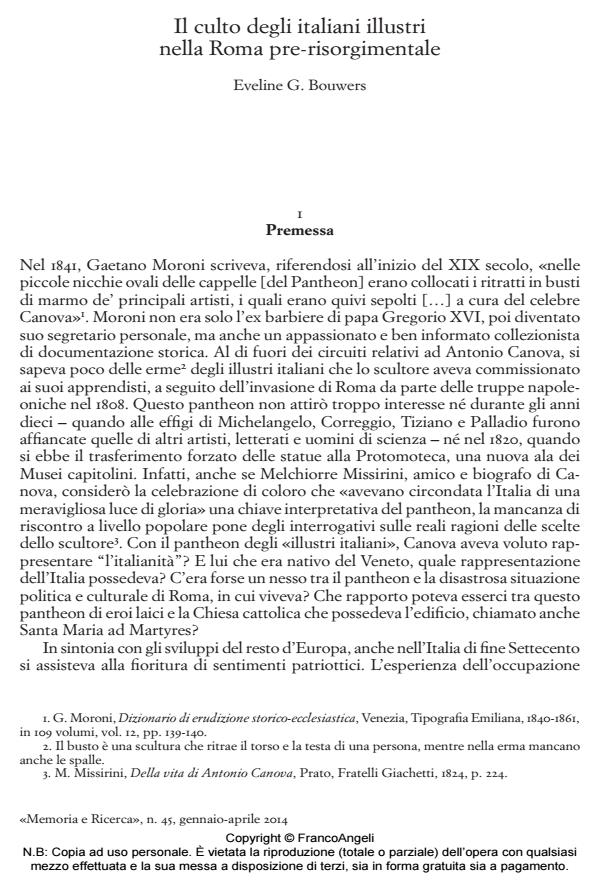The celebration of illustrious Italians in pre-Risorgimento Rome
Journal title MEMORIA E RICERCA
Author/s Eveline G. Bouwers
Publishing Year 2014 Issue 2014/45
Language Italian Pages 30 P. 127-156 File size 308 KB
DOI 10.3280/MER2014-045008
DOI is like a bar code for intellectual property: to have more infomation
click here
Below, you can see the article first page
If you want to buy this article in PDF format, you can do it, following the instructions to buy download credits

FrancoAngeli is member of Publishers International Linking Association, Inc (PILA), a not-for-profit association which run the CrossRef service enabling links to and from online scholarly content.
Well before the Risorgimento’s cult of heroes took a flight, sculptor Antonio Canova commissioned a series of busts of ‘illustrious Italians’ for the ancient Pantheon in Rome. Started in 1809, when Rome was under French control, the project was developed in agreement with the Roman Curia until, in 1820, Pope Pius VII ordered its removal to the Capitoline Museums. This article probes the origins, form and function of the Canovian pantheon. It analyses the sculptor’s incentives in commemorating artists, scientists and men of letters of Italy’s past, and queries the project’s public reception. Moreover, it evaluates the selection of men and contrasts these to Canova’s predilections, both artistic and personal. Finally, it assesses the pantheon’s impact on the commemoration of illustrious men in post-1848 Rome, specifically in relation to the pantheons on the Pincian and Janiculum hills.
Keywords: Italianita, Patriotism, heroism, Antonio Canova, Pantheon, Rome
Eveline G. Bouwers, Il culto degli italiani illustri nella Roma pre-risorgimentale in "MEMORIA E RICERCA " 45/2014, pp 127-156, DOI: 10.3280/MER2014-045008